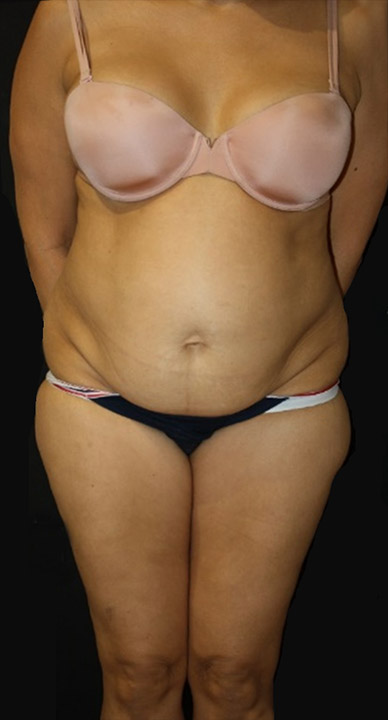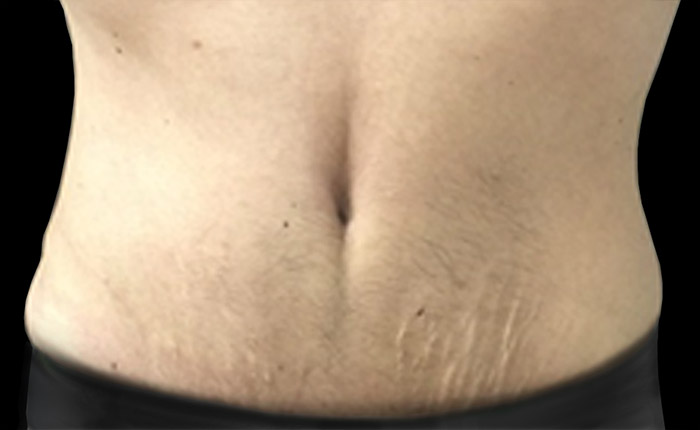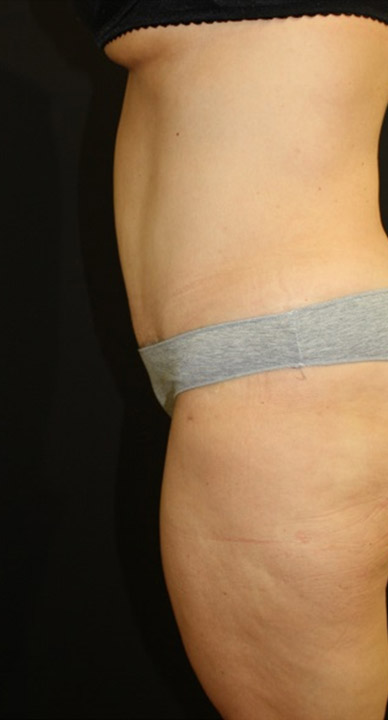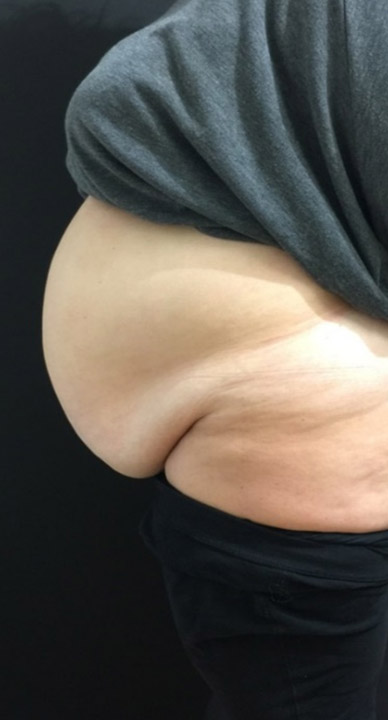Abdominoplasty
Abdominoplasty is a surgical procedure that corrects excess skin and fat in the abdomen.
Abdominoplasty and Combining operations
- Liposuction of the abdomen in the lateral areas
- Suturing the muscles. Under the belly fat, there are two elongated muscles, the abdominals. These muscles for various reasons and especially after multiple pregnancies, move to the side. The surgical correction of this diastasis leads postoperatively to a flatter belly, but also improves the final shape of the body.
Abdominoplasty – What needs to be done pre-operatively
- Classic pre-operative check-up.
- Don’t eat anything 12 hours before the operation and don’t drink anything 6 hours before.
- Don’t take any medicines the day of the surgery, if you don’t have the anesthesiologist’s approval.
- Smoking and drinking alcohol should be stopped at least 3 weeks before the operation.
- Meet with the anesthesiologist before the operation. You should inform the anesthesiologist about previous anesthetic experiences, positive or negative. Also, you should inform the anesthesiologist about any medical problems you are facing or medications you are taking.
- Don’t take aspirin, anti-inflammatory medicines or herbal supplements 10 days before the operation, because they might increase the possibility of bleeding during and after the operation.
- Wash your body with a medicinal soap 3 days before the operation, for once a day.
Abdominoplasty – Type of anesthesia
Abdominoplasty can be performed under general or epidural anesthesia. The patient must remain at the hospital for 1-2 days.
Abdominoplasty – Operative technique
With a low incision in the belly (as long as it is hidden in the swimsuit area) we detach fat from the skin and belly over the muscles of the abdominal wall. In order to move down the abdominal skin, we make a cut around the umbilicus and release it from the abdominal skin. The skin of the abdomen moves down and only the umbilicus remains in place. In a total abdominoplasty, the abdominal skin and fat are moved down and placed in the area where the initial incision took place. In other words, the skin under the umbilicus is completely removed during abdominoplasty and the skin above the umbilicus is placed in the slip area.
The duration of the operation is about 2-3 hours, depending on the case.
Abdominoplasty – Post-operative instructions
- The doctor applies a dressing to the wound for about 2 weeks.
- It is necessary to use a pressure garment for the first 4 weeks, 24 hours a day. For the 5th and 6th week (after surgery) use the pressure garment only during the day.
- The scar is red for the first 3 months and gradually becomes white. The final result becomes visible after 1 to 3 years.
- The incision should not be exposed to the sun for the first 3 months after surgery.
- Exercise is allowed after the 6th week.
- The final aesthetic result is visible after one year of the surgery.
- The incision will not disappear completely. There will be a white line on the swimsuit area. For better healing, it is recommended to massage the area with a cream every day and apply silicone sheets locally to the cut, until the desired aesthetic result.
- Imperfections in the final result may occur, such as a visible incision. Such defects can be corrected one year after the surgery.
Abdominoplasty – Complications
- Hematomas: Hematomas may appear after abdominoplasty. Hematomas can defer from small bruising up to a big collection of blood above the abdominal wall. To avoid hematoma, the plastic surgeon performs very good hemostasis during surgery but also leaves a drainage tract, which is usually removed 1-2 days postoperatively.
- Inflammation: In order to avoid this complication, antibiotics are administered intraoperatively.
- Wound opening: To avoid this complication, the plastic surgeon does not stitch the wound with high tension.
- Pulmonary embolism: Possible complication in any surgery. It is prevented with anticoagulants, immediately after surgery and with immediate mobilization of the patient.
- Hypoesthesia: Hypoesthesia mainly concerns the area below the umbilicus. It gradually goes away after 3 – 6 months.
- Organ perforation: Organ perforation is a rare complication. It can happen with the procedure of liposuction.
- Skin necrosis: In order to avoid this complication, the plastic surgeon avoids sewing the wound with high tension.
Heavy Smoking is always a possible negative factor.
To sum up, it should be understood that you should never underestimate the risks of this operation. It may be a simple surgery but complications are possible.
Preparation before surgery
- Photographs of the area are taken.
- Classical preoperative check-up includes blood tests, chest X-ray, and cardiac evaluation.
- 12 hours before surgery do not eat anything.
- 6 hours before surgery do not drink anything.
- On the morning of the operation do not take any medication without the anesthesiologist's approval.
- Alcohol should be stopped 1 week before surgery.
- In the case of general anesthesia, it is necessary to meet with the anesthesiologist before the surgery.
- Report previous anesthetic experiences, either positive or negative and inform him/her of any health problems or medication you are taking.
- Do not take aspirin, anti-inflammatory drugs, or herbal supplements 10 days before the surgery, as they increase the possibility of bleeding during and after surgery.
- 3 days before the surgery and every day after washing your face or body with medicated soap, depending on the planned surgery.
General Complications after surgery
Complications in plastic surgery operations are not common but it is necessary to be aware of them at the first appointment.
- Hematoma: A hematoma is the accumulation of blood in the wound.
- Inflammation: To prevent inflammation, antibiotics are administered during surgery.
- Poor wound healing: If the incision in the operated site is more prominent than expected, it can be corrected 6 months to a year after surgery with local anesthesia. In some cases, the appearance of keloids is possible where specific treatment is needed.
- Skin necrosis: It is more likely in heavy smokers.
- Pulmonary embolism and thrombosis.
This text may give rise to new questions. We are at your disposal for any other information.









